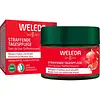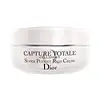What's inside
What's inside
 Key Ingredients
Key Ingredients

 Benefits
Benefits

 Concerns
Concerns

 Ingredients Side-by-side
Ingredients Side-by-side

Water
Skin ConditioningSesamum Indicum Seed Oil
EmollientGlycerin
HumectantPentylene Glycol
Skin ConditioningAlcohol
AntimicrobialHectorite
AbsorbentCetearyl Olivate
Punica Granatum Seed Oil
EmollientMacadamia Ternifolia Seed Oil
EmollientTapioca Starch
Panicum Miliaceum Seed Extract
Skin ConditioningOlea Europaea Leaf Extract
PerfumingHelianthus Annuus Seed Oil
EmollientBetaine
HumectantXanthan Gum
EmulsifyingCarrageenan
Citric Acid
BufferingTocopherol
AntioxidantHydrolyzed Lepidium Meyenii Root
Skin ConditioningSorbitan Stearate
EmulsifyingSorbitan Olivate
EmulsifyingGlyceryl Caprylate
EmollientSodium Stearoyl Glutamate
CleansingSucrose Cocoate
EmulsifyingMaltodextrin
AbsorbentParfum
MaskingLimonene
PerfumingLinalool
PerfumingBenzyl Benzoate
AntimicrobialGeraniol
PerfumingCitral
PerfumingCoumarin
PerfumingAnt Egg Oil Extract
Water, Sesamum Indicum Seed Oil, Glycerin, Pentylene Glycol, Alcohol, Hectorite, Cetearyl Olivate, Punica Granatum Seed Oil, Macadamia Ternifolia Seed Oil, Tapioca Starch, Panicum Miliaceum Seed Extract, Olea Europaea Leaf Extract, Helianthus Annuus Seed Oil, Betaine, Xanthan Gum, Carrageenan, Citric Acid, Tocopherol, Hydrolyzed Lepidium Meyenii Root, Sorbitan Stearate, Sorbitan Olivate, Glyceryl Caprylate, Sodium Stearoyl Glutamate, Sucrose Cocoate, Maltodextrin, Parfum, Limonene, Linalool, Benzyl Benzoate, Geraniol, Citral, Coumarin, Ant Egg Oil Extract
Water
Skin ConditioningGlycerin
HumectantNiacinamide
SmoothingCaprylic/Capric/Succinic Triglyceride
EmollientButylene Glycol
HumectantDicaprylyl Ether
EmollientCetyl Alcohol
EmollientGlyceryl Stearate
EmollientPEG-100 Stearate
Hydrogenated Coco-Glycerides
EmollientLauroyl Lysine
Skin ConditioningJojoba Esters
EmollientIsostearyl Hydroxystearate
EmollientC10-18 Triglycerides
EmollientPolyglyceryl-3 Beeswax
EmulsifyingAframomum Angustifolium Seed Extract
Skin ConditioningPaeonia Lactiflora Root Extract
Skin ConditioningLilium Candidum Bulb Extract
Skin ConditioningJasminum Officinale Flower Extract
MaskingAscorbyl Glucoside
AntioxidantAdenosine
Skin ConditioningSodium Tocopheryl Phosphate
AntioxidantPalmaria Palmata Extract
Skin ProtectingHydrolyzed Soy Protein
HumectantParfum
MaskingStearyl Alcohol
EmollientMicrocrystalline Cellulose
AbsorbentXylitol
HumectantChlorphenesin
AntimicrobialPrunus Amygdalus Dulcis Oil
Skin ConditioningXanthan Gum
EmulsifyingCeramide NP
Skin ConditioningSodium Acetylated Hyaluronate
HumectantSodium Surfactin
CleansingCellulose Gum
Emulsion StabilisingSodium Hydroxide
BufferingTrisodium Ethylenediamine Disuccinate
Pentaerythrityl Tetra-Di-T-Butyl Hydroxyhydrocinnamate
AntioxidantSodium Benzoate
MaskingTrehalose
HumectantPotassium Sorbate
PreservativePaeonia Officinalis Flower Extract
TonicTocopherol
AntioxidantCI 14700
Cosmetic ColorantDimethicone
EmollientCaprylyl Glycol
EmollientAcrylates/C10-30 Alkyl Acrylate Crosspolymer
Emulsion StabilisingDimethiconol
EmollientAlpha-Isomethyl Ionone
PerfumingLimonene
PerfumingWater, Glycerin, Niacinamide, Caprylic/Capric/Succinic Triglyceride, Butylene Glycol, Dicaprylyl Ether, Cetyl Alcohol, Glyceryl Stearate, PEG-100 Stearate, Hydrogenated Coco-Glycerides, Lauroyl Lysine, Jojoba Esters, Isostearyl Hydroxystearate, C10-18 Triglycerides, Polyglyceryl-3 Beeswax, Aframomum Angustifolium Seed Extract, Paeonia Lactiflora Root Extract, Lilium Candidum Bulb Extract, Jasminum Officinale Flower Extract, Ascorbyl Glucoside, Adenosine, Sodium Tocopheryl Phosphate, Palmaria Palmata Extract, Hydrolyzed Soy Protein, Parfum, Stearyl Alcohol, Microcrystalline Cellulose, Xylitol, Chlorphenesin, Prunus Amygdalus Dulcis Oil, Xanthan Gum, Ceramide NP, Sodium Acetylated Hyaluronate, Sodium Surfactin, Cellulose Gum, Sodium Hydroxide, Trisodium Ethylenediamine Disuccinate, Pentaerythrityl Tetra-Di-T-Butyl Hydroxyhydrocinnamate, Sodium Benzoate, Trehalose, Potassium Sorbate, Paeonia Officinalis Flower Extract, Tocopherol, CI 14700, Dimethicone, Caprylyl Glycol, Acrylates/C10-30 Alkyl Acrylate Crosspolymer, Dimethiconol, Alpha-Isomethyl Ionone, Limonene
 Reviews
Reviews

Ingredients Explained
These ingredients are found in both products.
Ingredients higher up in an ingredient list are typically present in a larger amount.
Glycerin is already naturally found in your skin. It helps moisturize and protect your skin.
A study from 2016 found glycerin to be more effective as a humectant than AHAs and hyaluronic acid.
As a humectant, it helps the skin stay hydrated by pulling moisture to your skin. The low molecular weight of glycerin allows it to pull moisture into the deeper layers of your skin.
Hydrated skin improves your skin barrier; Your skin barrier helps protect against irritants and bacteria.
Glycerin has also been found to have antimicrobial and antiviral properties. Due to these properties, glycerin is often used in wound and burn treatments.
In cosmetics, glycerin is usually derived from plants such as soybean or palm. However, it can also be sourced from animals, such as tallow or animal fat.
This ingredient is organic, colorless, odorless, and non-toxic.
Glycerin is the name for this ingredient in American English. British English uses Glycerol/Glycerine.
Learn more about GlycerinLimonene is a fragrance that adds scent and taste to a formulation.
It's found in the peel oil of citrus fruits and other plants such as lavender and eucalyptus. The scent of limonene is generally described as "sweet citrus".
Limonene acts as an antioxidant, meaning it helps neutralize free radicals.
When exposed to air, oxidized limonene may sensitize the skin. Because of this, limonene is often avoided by people with sensitive skin.
The term 'fragrance' is not regulated in many countries. In many cases, it is up to the brand to define this term. For instance, many brands choose to label themselves as "fragrance-free" because they are not using synthetic fragrances. However, their products may still contain ingredients such as essential oils that are considered a fragrance.
Learn more about LimoneneParfum is a catch-all term for an ingredient or more that is used to give a scent to products.
Also called "fragrance", this ingredient can be a blend of hundreds of chemicals or plant oils. This means every product with "fragrance" or "parfum" in the ingredients list is a different mixture.
For instance, Habanolide is a proprietary trade name for a specific aroma chemical. When used as a fragrance ingredient in cosmetics, most aroma chemicals fall under the broad labeling category of “FRAGRANCE” or “PARFUM” according to EU and US regulations.
The term 'parfum' or 'fragrance' is not regulated in many countries. In many cases, it is up to the brand to define this term.
For instance, many brands choose to label themselves as "fragrance-free" because they are not using synthetic fragrances. However, their products may still contain ingredients such as essential oils that are considered a fragrance by INCI standards.
One example is Calendula flower extract. Calendula is an essential oil that still imparts a scent or 'fragrance'.
Depending on the blend, the ingredients in the mixture can cause allergies and sensitivities on the skin. Some ingredients that are known EU allergens include linalool and citronellol.
Parfum can also be used to mask or cover an unpleasant scent.
The bottom line is: not all fragrances/parfum/ingredients are created equally. If you are worried about fragrances, we recommend taking a closer look at an ingredient. And of course, we always recommend speaking with a professional.
Learn more about ParfumTocopherol (also known as Vitamin E) is a common antioxidant used to help protect the skin from free-radicals and strengthen the skin barrier. It's also fat soluble - this means our skin is great at absorbing it.
Vitamin E also helps keep your natural skin lipids healthy. Your lipid skin barrier naturally consists of lipids, ceramides, and fatty acids. Vitamin E offers extra protection for your skin’s lipid barrier, keeping your skin healthy and nourished.
Another benefit is a bit of UV protection. Vitamin E helps reduce the damage caused by UVB rays. (It should not replace your sunscreen). Combining it with Vitamin C can decrease sunburned cells and hyperpigmentation after UV exposure.
You might have noticed Vitamin E + C often paired together. This is because it is great at stabilizing Vitamin C. Using the two together helps increase the effectiveness of both ingredients.
There are often claims that Vitamin E can reduce/prevent scarring, but these claims haven't been confirmed by scientific research.
Learn more about TocopherolWater. It's the most common cosmetic ingredient of all. You'll usually see it at the top of ingredient lists, meaning that it makes up the largest part of the product.
So why is it so popular? Water most often acts as a solvent - this means that it helps dissolve other ingredients into the formulation.
You'll also recognize water as that liquid we all need to stay alive. If you see this, drink a glass of water. Stay hydrated!
Learn more about WaterXanthan gum is used as a stabilizer and thickener within cosmetic products. It helps give products a sticky, thick feeling - preventing them from being too runny.
On the technical side of things, xanthan gum is a polysaccharide - a combination consisting of multiple sugar molecules bonded together.
Xanthan gum is a pretty common and great ingredient. It is a natural, non-toxic, non-irritating ingredient that is also commonly used in food products.
Learn more about Xanthan Gum